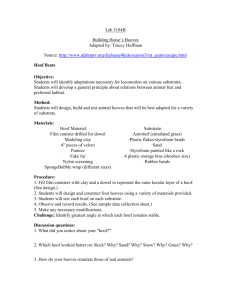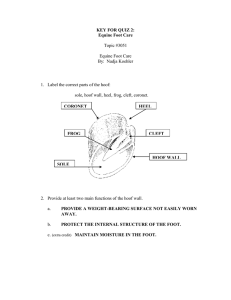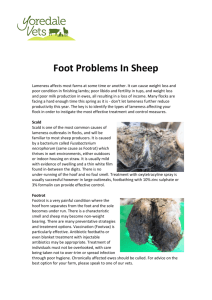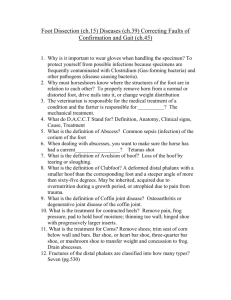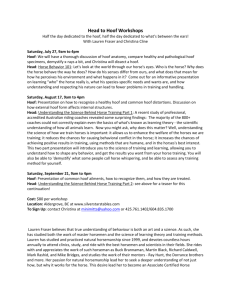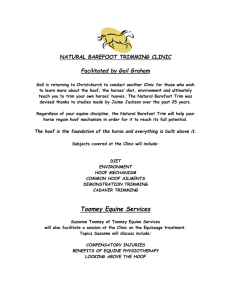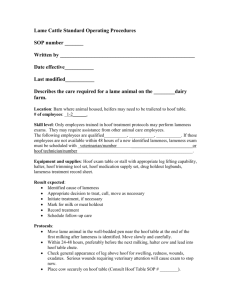A. Parts of the Hoof
advertisement
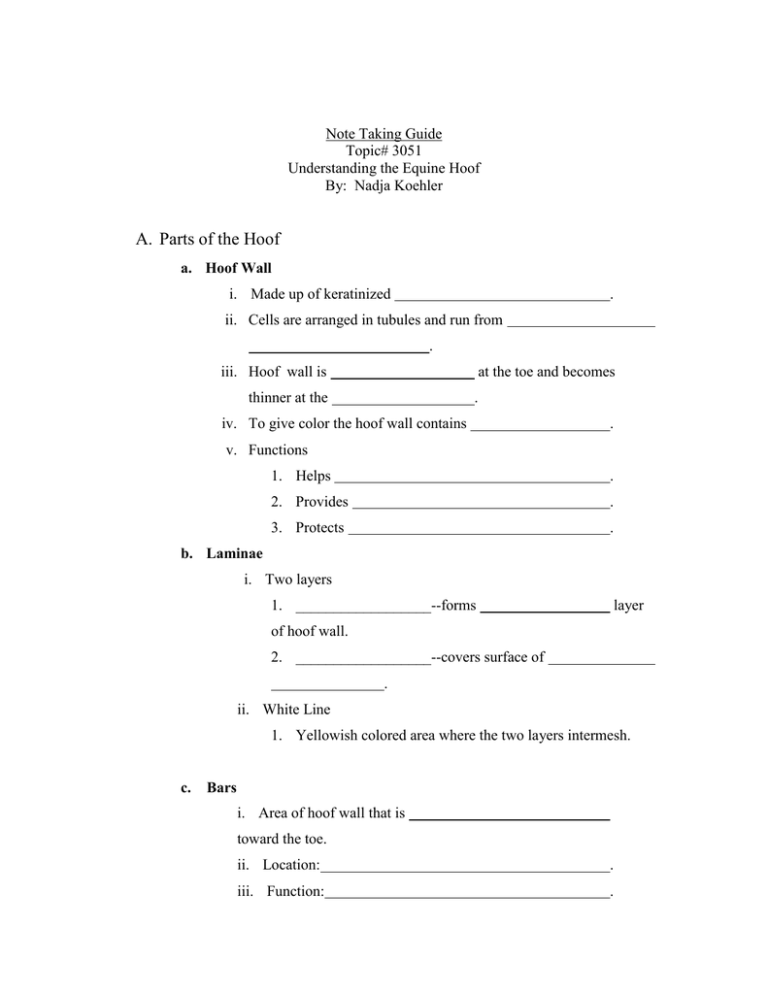
Note Taking Guide Topic# 3051 Understanding the Equine Hoof By: Nadja Koehler A. Parts of the Hoof a. Hoof Wall i. Made up of keratinized . ii. Cells are arranged in tubules and run from . iii. Hoof wall is at the toe and becomes thinner at the . iv. To give color the hoof wall contains . v. Functions 1. Helps . 2. Provides . 3. Protects . b. Laminae i. Two layers 1. __________________--forms layer of hoof wall. 2. __________________--covers surface of . ii. White Line 1. Yellowish colored area where the two layers intermesh. c. Bars i. Area of hoof wall that is toward the toe. ii. Location: . iii. Function: . d. Sole i. Covers bottom of coffin bone. ii. Sensitive iii. Self-limiting growth-. iv. Concave at ground surface 1. This prevents sole from v. Easily bruised 1. Occurs when bearing excessive weight such as heavy riders (for size of horse) or when a horse has “flat feet”. e. Frog i. Location: ii. Shaped like a . 1. Apex—point 2. Cleft—ridge iii. Sensitive iv. Produced by papillae v. Elastic—flexible 1. Kept this way by 2. Moisture content of frog is 50%. f. __________________ Cushion i. Also called plantar cushion. ii. Fleshy “heel”. iii. Functions: g. Bones i. _________________ bones: 1. _______________________--Partly in and above hoof. 2. _______________________--Smallest, increases articulation and movement of coffin bone. 3. _______________________--Largest bone. Located to front and outer side of hoof. Provides and needed for weight bearing. Resembles a miniature hoof in shape. B. The Hoof as a Heart a. Blood is pumped to the from the heart through arteries. b. When your horse steps on the ground pressure is put on the veins in the which forces the blood back to the heart. c. As your horse lifts up its foot the pressure is and the blood flows back to the hoof due to . C. Healthy Hooves a. Most lameness can be prevented by . b. The horses c. is a good indicator of foot health. Good foot care includes: i. Regularity-- . ii. Frequency-- . iii. ______________________ iv. Use of proper corrective measures-. d. Always clean from heel to toe. e. Applying too much pressure during cleaning can cause damage and/or . f. The goal or trimming is: g. Your horse’s hooves should be trimmed every depending on usage. weeks D. Causes of Lameness a. Stone in the Foot i. Stones lodge between shoe and . b. Bruised Sole i. Direct injury of flat of foot by stones or irregular ground. c. Corns i. Bruising of sole between bar and hoof wall. ii. Caused by: d. Pricked Foot or i. Foreign objects directly entering . e. Hoof Cracks i. Occur mostly from dry or untrimmed hooves but can also occur by injury of hoof-forming tissue. f. ______________________ i. Bacterial infection of frog and sole due to . g. ______________________ i. Inflammation of the laminae. ii. Caused by: 1. overeating of grain 2. 3. 4. an over fat horse 5. h. Navicular Disease i. Injury to the . ii. Common in breeds with genetic conformation defects. iii. Heavy use on hard ground increases probability of occurrence.

